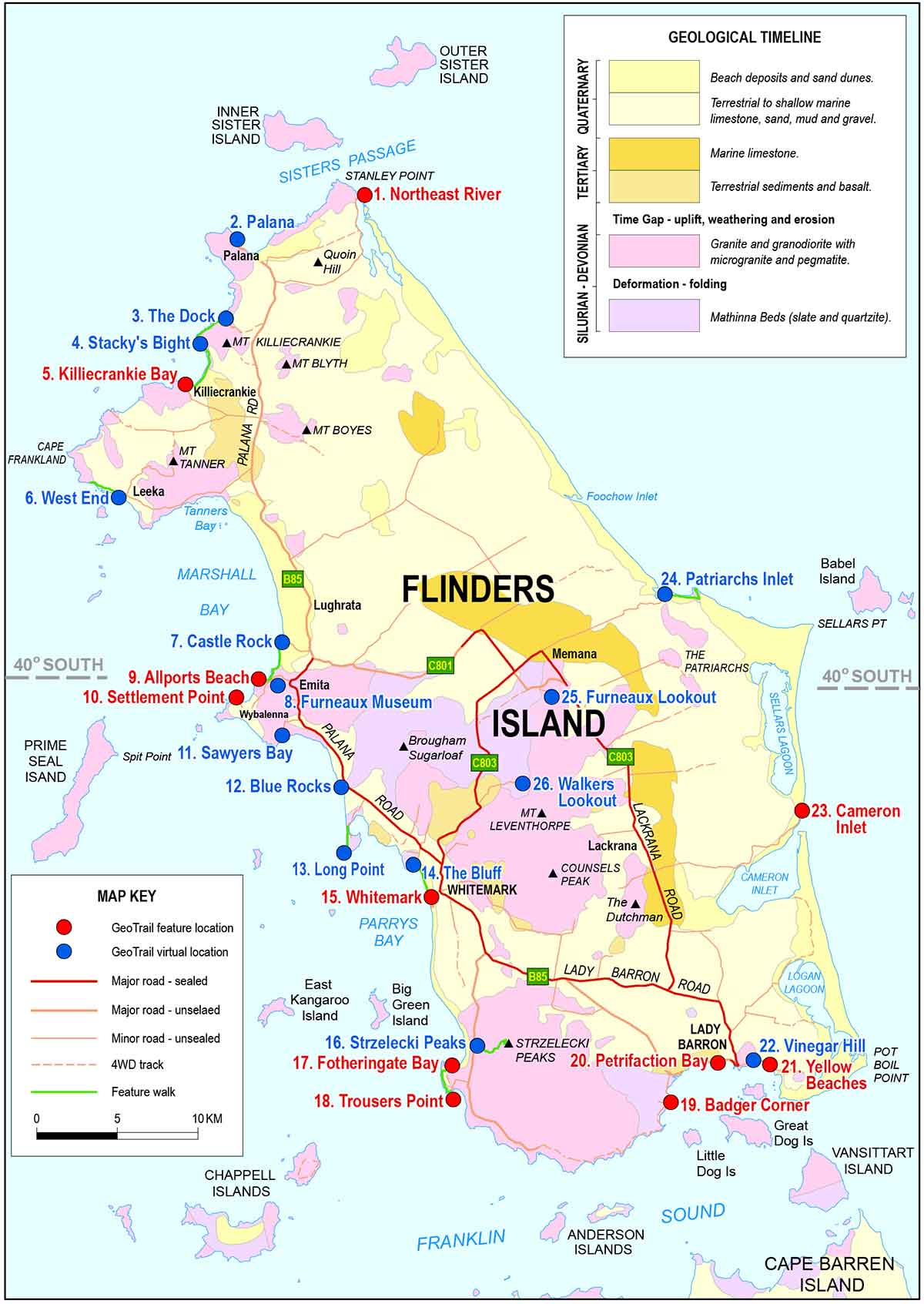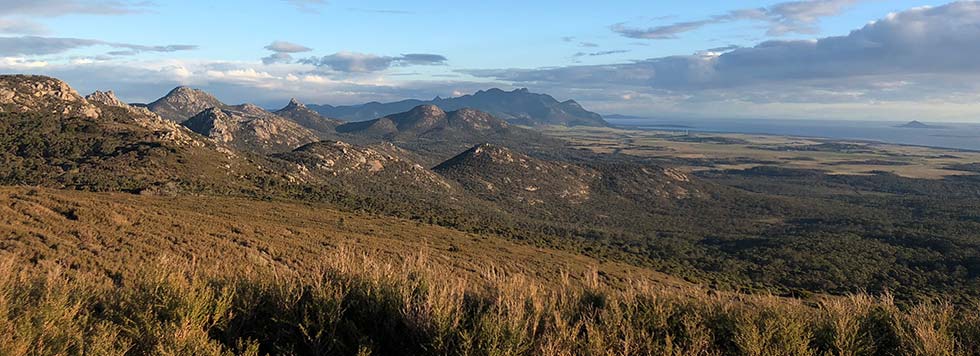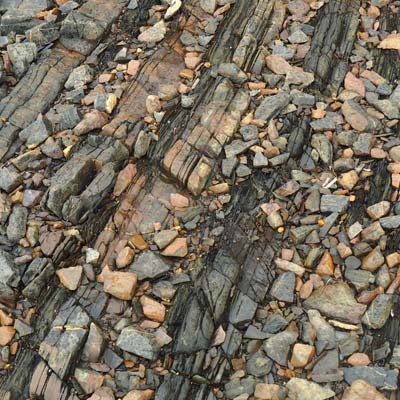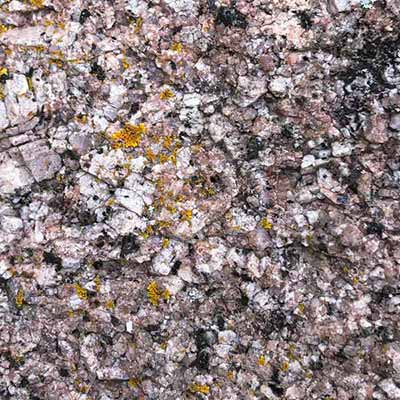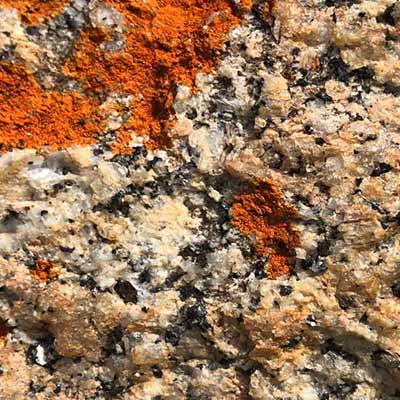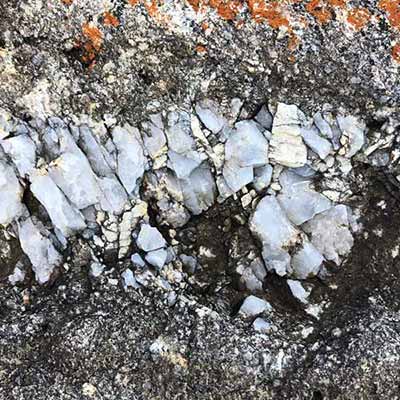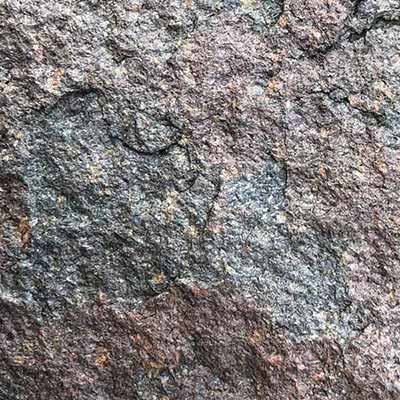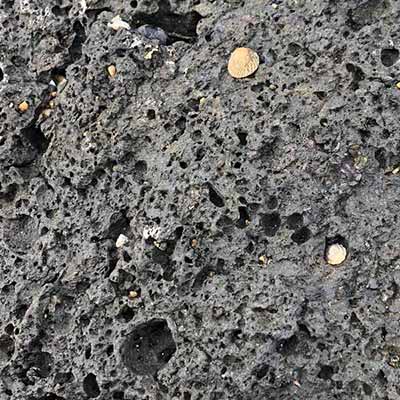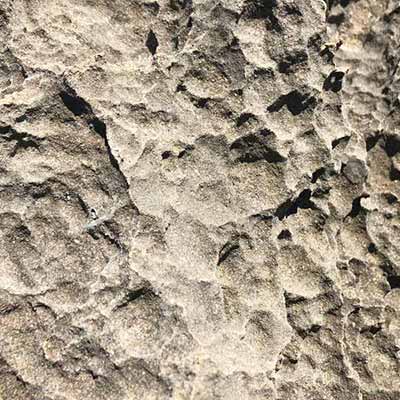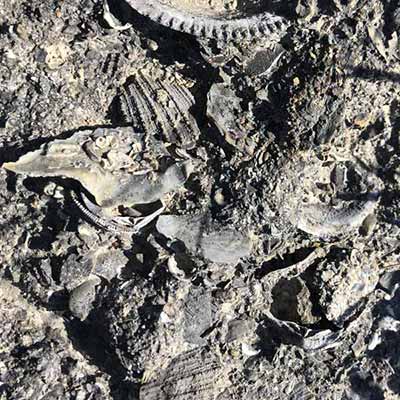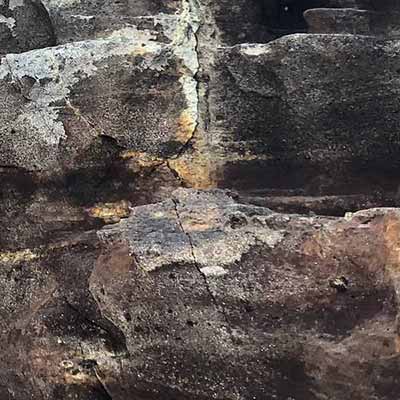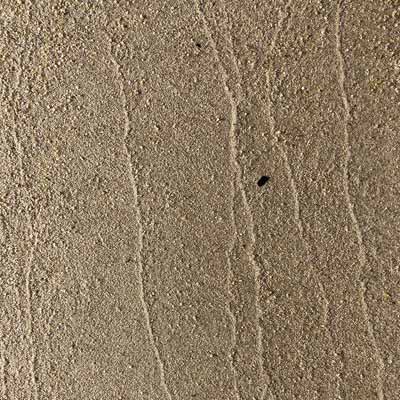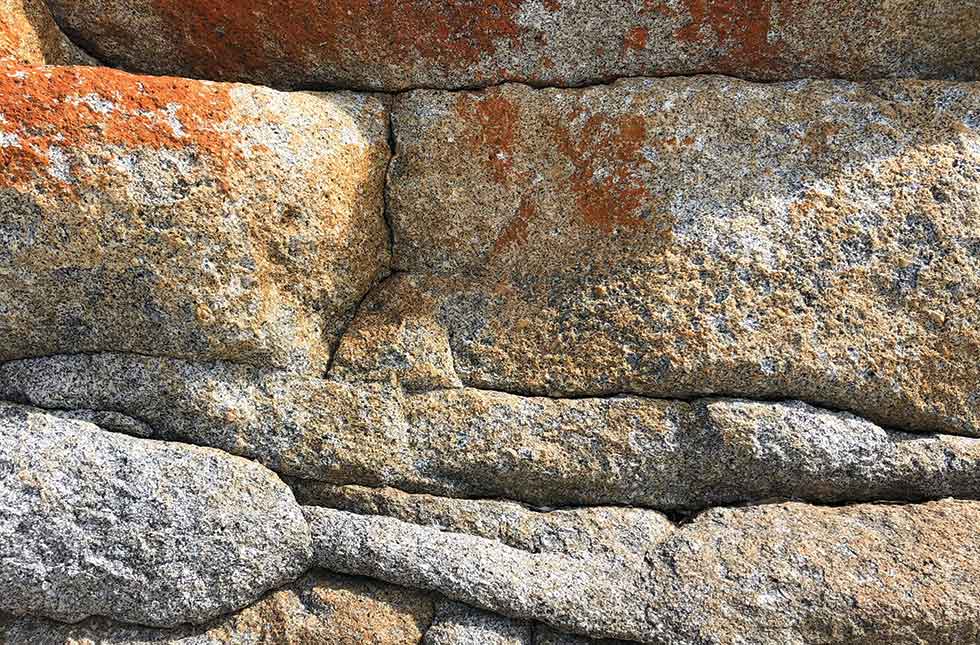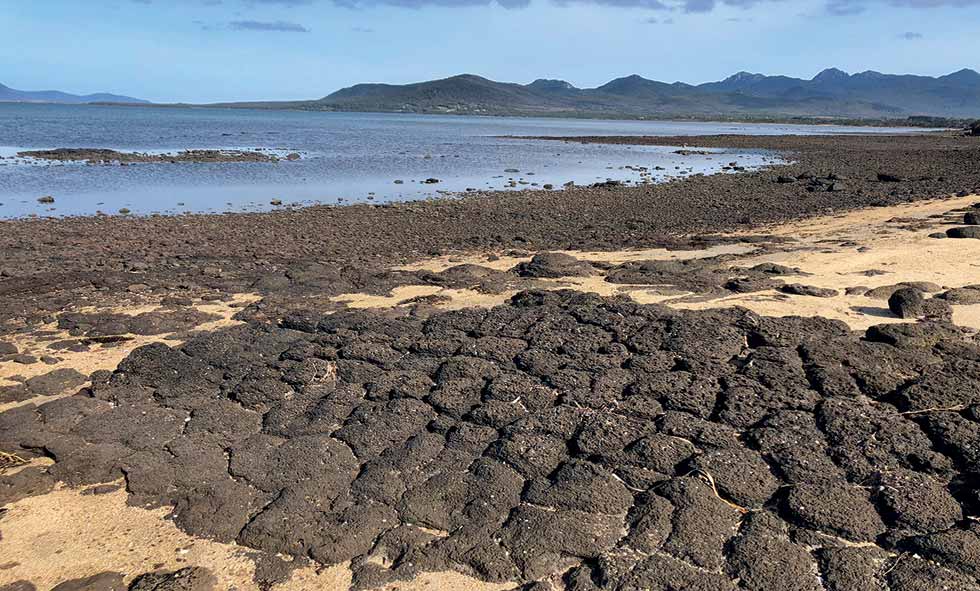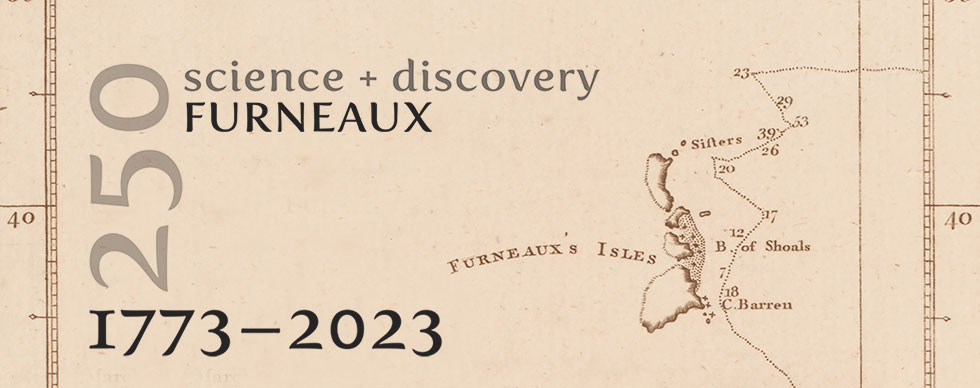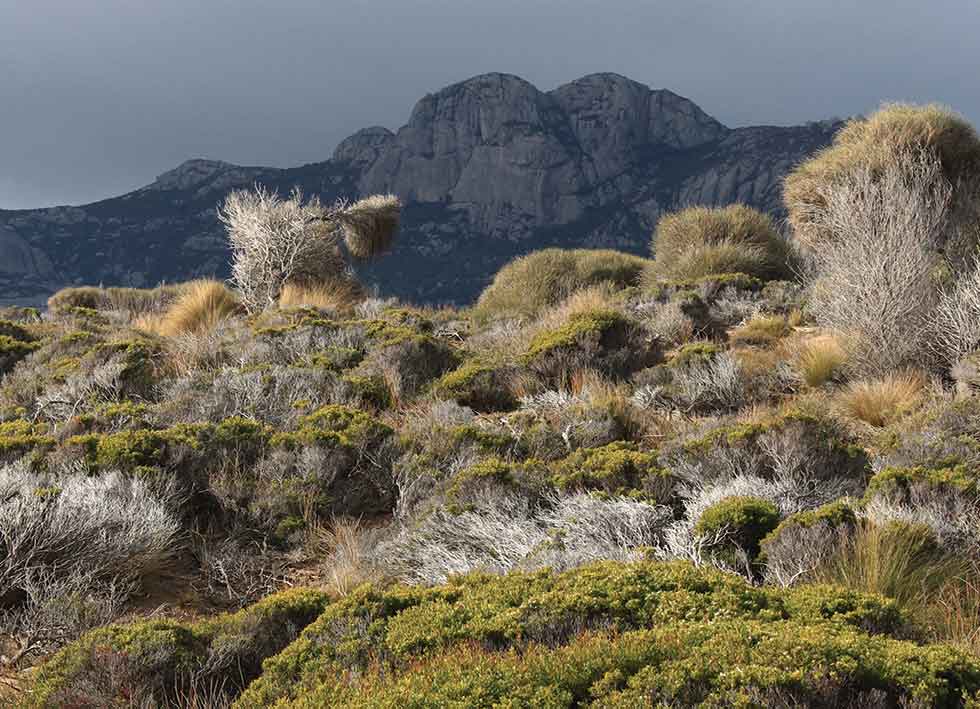
Discover the stories written in the landscape across Flinders Island and its surrounding Bass Strait archipelago along the Furneaux Geotrail.
The diverse and picturesque landscape of the Furneaux
Group includes unspoilt beaches, rugged rocky coasts,
impressive mountains, remote islands, bush tracks
and trails, rich agricultural land, lagoons, wetlands,
conservation areas and national parks.

It also possesses spectacular and significant geological
features, which developed over the last 420 million years.
The Furneaux GeoTrail consists of 26 geosites which
provide an opportunity to learn about the geology and
important geological events that have shaped the current
landscape. It also takes you to the most beautiful locations
on Flinders Island. Some of the geosites are marked with
Interpretation signage, others are ‘virtual’ geosites.
This GeoTrail webapp allows you to visit all of the geosites
on your smartphone, ipad or computer. It contains
additional information and photos about each of the
geosites.

1. North East River
View the local coastal landscape shaped by sea and wind.
GEONOTES

2. Palana
Look to the north across the water and imagine a time when the ice age land bridge extended across to Victoria. Use the app to learn about the sand dunes behind the beach. GEONOTES

3. The Dock
Follow the indistinct track, southwest from the lower carpark, along the scenic rocky shoreline beneath the impressive sculptured cliff of Mt Killiecrankie. GEONOTES

4. Stackys Bight
A spectacular arch developed in calcarenite. Stackys Bight can be accessed via the coastal walk from the Killiecrankie Geosite (3 hs return, 8 km). GEONOTES

5. Killiecrankie
This Geosite features the local granite and source of the Killiecrankie diamonds [topaz]. GEONOTES

6. West End
Walk along the beautiful West End Beach or explore the granite coastline near the boat ramp. The more adventurous should visit the nearby spectacular Egg Beach (4 km return along rocky coast to northwest, 1-2 hr). GEONOTES

7. Castle Rock
A spectacular tor developed on 400 million year old granodiorite. One of the iconic landforms on Flinders Island. GEONOTES

8. Furneaux Museum
... houses a collection of the common rocks and fossils found along the GeoTrail. Check the Furneaux Museum website or the recorded message on 6359 8434 for opening times. GEONOTES

9. Allports Beach
Toilet and picnic facilities make this the perfect spot for lunch. Explore the beach or take one of Tasmania’s 60 Great Short Walks to visit Castle Rock. GEONOTES

10. Settlement Point
The old wharf at Settlement Point provides excellent views of Marshall Bay and Cave Beach. GEONOTES

11. Sawyers Bay
Classic Flinders Island granite coastal scenery with striking views south across the sheltered waters of Arthurs Bay and beyond. GEONOTES

12. Blue Rocks
Scenic slabs of exfoliating granodiorite can be accessed via Long Point Beach (best at low tide) or via a short unmarked track off the Palana Road approximately 10 kilometres north of Whitemark. GEONOTES

13. Long Point
Outcrops of Mathinna Beds can be reached via a short walk along Long Point Beach (best at low tide). GEONOTES

14. The Bluff
Walk from the Whitemark Wharf, or drive to the end of Bluff Road. Great views and a unique sand spit. Go past the rocky headland (Mathinna Beds), to see the delta forming at the mouth of Pats River. GEONOTES

15. Whitemark
An interpretation sign outlines all the geological sites you can visit – travelling through millions of years, seeing the forces that have shaped the landscape. GEONOTES

16. Strzelecki Peaks
One of Tasmania’s 60 Great Walks highlighting the importance of the 380-400 million year old Devonian granite to the region. GEONOTES

17. Fotheringate Bay
Fotheringate Bay offers a great view of nearby Strzelecki Peaks. Karst features have developed in the calcarenite at the west end of the beach. GEONOTES

18. Trousers Point
Another of Tasmania’s 60 Great Walks, includes local granite outcrops, interesting limestone features and scenic views. This track provides an easy link with the Fotheringate Bay Geosite. GEONOTES

19. Badger Corner
The Mathinna Beds, some of the oldest rocks on the island, are best seen here at low tide. GEONOTES

20. Petrifaction Bay
Basalt boulders and lava features tell an intriguing part of the island’s geohistory. GEONOTES

21.Yellow Beaches
Walk along the beach to see sedimentary rock layers that were deposited between 10,000 and 100,000 years ago and local granite outcrops. GEONOTES

22. Vinegar Hill
A wonderful vantage point looking out over Franklin Sound to the islands. GEONOTES

23. Cameron Inlet
Walk out onto the beach to look for giant megalodon shark teeth. GEONOTES

24. Patriarch Inlet
Explore the beach or visit Red Bluff (2-3 hr return, 7km).
GEONOTES

25. Furneaux Lookout
Both this and Walkers lookouts provide panoramic views over much of Flinders Island.
GEONOTES

26. Walkers Lookout
GEONOTES
In March 1773, the H.M.S. Adventure under the command of Tobias Furneaux recorded the position of a series of islands in the waters between Cape Howe on the New Holland mainland and Van Dieman's Land to the south.
Having become separated from Capt Cook aboard the H.M.S. Resolution as they journeyed up from the southern ocean, Furneaux charted the east coast of Van Dieman's Land prior to breaking off eastwards to rejoin Cook in New Zealand.
Today Furneaux's charting of the group of islands that bear his name marks the start of 250 years of scientific exploration and discovery across the Furneaux Group.
Our knowledge of the Furneaux Group's geology has been built up steadily over the past two centuries thanks to the work of scientists and map makers.
A key highlight in this was the work Commander Stokes undertook on the HMS Beagle c.1841 to make a detailed chart of the islands of Bass Strait.
Accompanying him on this work around the Furneaux Group was the famous Polish scientist Count Strzelecki.
Strzelecki's initial geological observations were soon expanded on in the 1870s with several landmark reports and geological maps being produced.
Today the detailed geological map of the Furneaux Group provides a snapshot embracing generations of ongoing scientific research into the islands' geological heritage.
Read detailed accounts from the 250 years of research and discovery across the Furneaux Group of islands ...
Paweł Edmund de Strzelecki was a Polish explorer and scientist whose travels left an indelible mark on the history of both Tasmanian geology and Flinders Island.
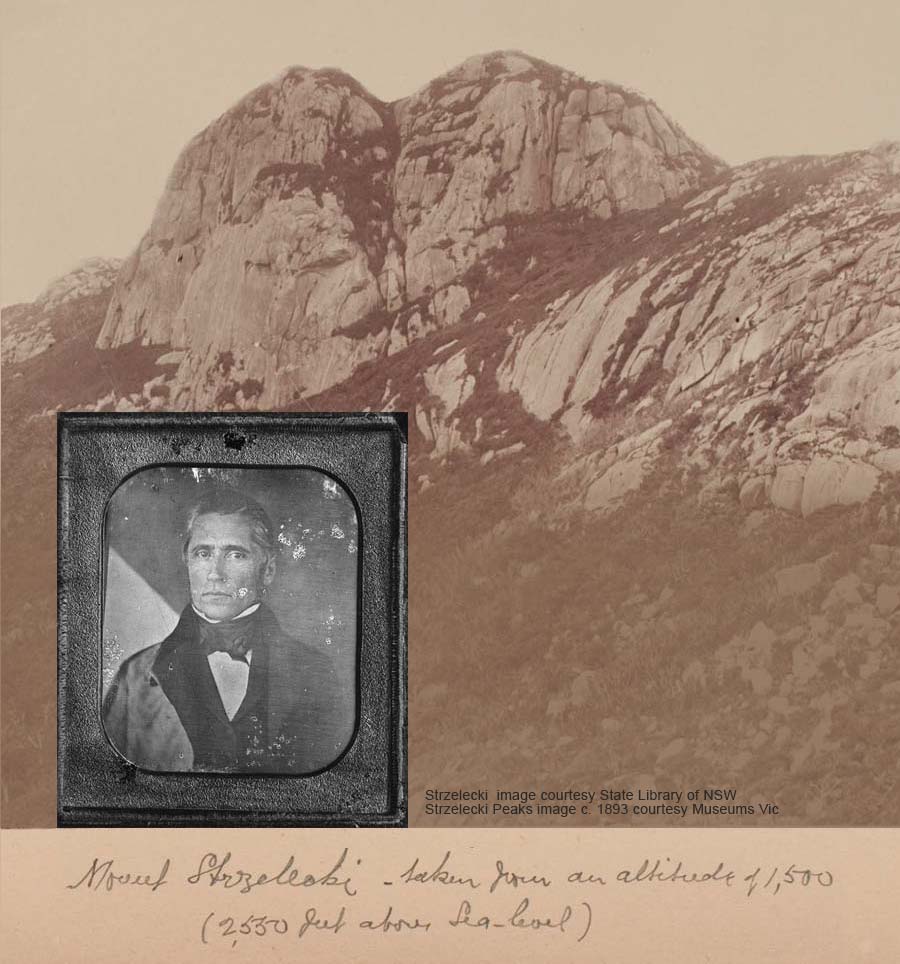
In 1845 his geological map of New South Wales, Victoria and Tasmania was published along with an account of the physical descriptions of these places. In his book, Strzelecki noted that ...
"On the 13th January, 1842, I ascended, from the
westward, the highest peak of Flinders Island, which
Captain Stokes, of H.M. surveying ship the "Beagle"
has done me the honour of naming Strzelecki's Peak
(2550 feet)."
The Furneaux Geotrail is an initiative of the Flinders Island community proudly supported by the Tasmanian Government.
To discover the full range of things to do on this remarkable Bass Strait island go to the visitflindersisland.com.au website.




